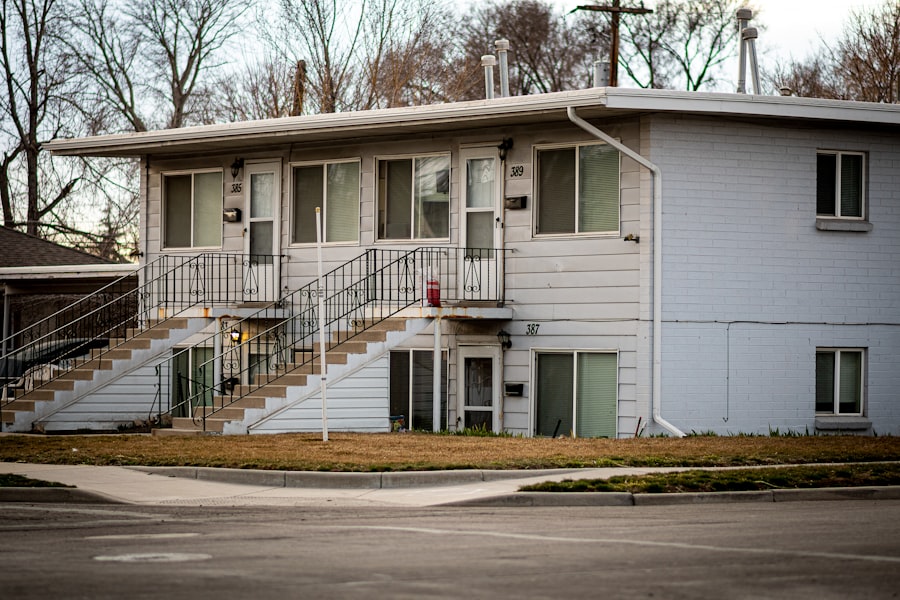You may have noticed that the dream of homeownership is slipping further away for many individuals and families. The housing affordability crisis has become a pressing issue in numerous cities across the globe, affecting not just those looking to buy homes but also renters struggling to make ends meet. This crisis is characterized by skyrocketing property prices, stagnant wages, and a growing divide between those who can afford housing and those who cannot.
As you delve deeper into this topic, you will uncover the multifaceted nature of the crisis, which is influenced by a myriad of economic, social, and political factors. Understanding the housing affordability crisis requires you to consider the broader implications it has on society. It is not merely a personal issue; it affects communities, local economies, and even national stability.
When housing becomes unaffordable, it leads to increased homelessness, overcrowding, and a decline in overall quality of life. As you explore the various dimensions of this crisis, you will see how interconnected these issues are and how they collectively contribute to a growing sense of urgency for solutions.
Key Takeaways
- The housing affordability crisis is a growing concern, with economic factors contributing to unaffordability.
- The imbalance between housing supply and demand has a significant impact on affordability.
- Government policies and regulations play a crucial role in addressing housing affordability issues.
- Gentrification and displacement are important considerations in the housing affordability crisis.
- Income inequality, wage stagnation, and racial and ethnic disparities also contribute to housing unaffordability.
Economic Factors Contributing to Housing Unaffordability
As you examine the economic landscape, it becomes clear that several factors are driving the unaffordability of housing. One significant contributor is the rise in property prices, which has outpaced wage growth for many years. You may find it alarming that in some regions, home prices have increased at a rate far exceeding inflation and average income growth.
This disparity creates a situation where even middle-class families struggle to afford homes, leading to increased reliance on rental markets. Additionally, interest rates play a crucial role in housing affordability. When interest rates are low, borrowing becomes cheaper, which can lead to increased demand for homes and subsequently drive up prices.
Conversely, when rates rise, potential buyers may be priced out of the market altogether. You might also consider how economic cycles impact housing; during periods of economic growth, demand surges, while recessions can lead to stagnation or declines in property values. This cyclical nature of the economy adds another layer of complexity to the housing affordability crisis.
Impact of Housing Supply and Demand Imbalance

The imbalance between housing supply and demand is another critical factor contributing to the affordability crisis. As you look at urban areas experiencing rapid population growth, you will notice that the supply of available housing often fails to keep pace with demand. This mismatch leads to fierce competition among buyers and renters, driving prices even higher.
You may find it interesting that many cities have seen a surge in demand due to factors such as job opportunities and lifestyle preferences, yet the construction of new homes has not kept up. Moreover, zoning laws and land use regulations can exacerbate this issue by limiting the types of housing that can be built in certain areas. You might consider how these regulations often prioritize single-family homes over multi-family units or affordable housing developments.
This restriction on supply not only limits options for potential homeowners but also contributes to rising rents in urban centers. As you reflect on these dynamics, it becomes evident that addressing the supply-demand imbalance is essential for alleviating the housing affordability crisis.
Government Policies and Regulations
| Country | Policy/Regulation | Impact |
|---|---|---|
| United States | Tax Cuts and Jobs Act | Lower corporate tax rates, increased investment |
| United Kingdom | Brexit | Changes in trade agreements and regulations |
| China | Foreign Investment Law | Improved market access for foreign investors |
Government policies and regulations play a pivotal role in shaping the housing market. As you explore this aspect, you will find that various policies can either mitigate or exacerbate the affordability crisis. For instance, tax incentives for homebuyers or subsidies for low-income renters can help make housing more accessible.
However, you may also encounter policies that inadvertently contribute to rising costs, such as restrictive zoning laws or excessive permitting processes that delay new construction. You might also consider how government intervention can vary significantly from one region to another. In some areas, local governments have implemented innovative solutions to increase affordable housing stock, while others have struggled to address the issue effectively.
As you analyze these differences, it becomes clear that a comprehensive approach involving collaboration between federal, state, and local governments is necessary to create sustainable solutions for housing affordability.
Gentrification and Displacement
Gentrification is another critical factor influencing housing affordability, particularly in urban neighborhoods undergoing revitalization. As you investigate this phenomenon, you will see how an influx of wealthier residents can lead to rising property values and rents, ultimately displacing long-time residents who can no longer afford to live in their communities. This process often results in a loss of cultural identity and community cohesion as neighborhoods transform to cater to new demographics.
You may find it troubling that gentrification often disproportionately affects marginalized communities. As neighborhoods become more desirable due to new amenities and infrastructure improvements, those who have lived there for generations may be forced out due to escalating costs. This cycle of displacement not only exacerbates housing unaffordability but also raises questions about social equity and justice.
As you reflect on these issues, consider how policies aimed at protecting vulnerable populations can help mitigate the negative impacts of gentrification.
Income Inequality and Wage Stagnation

Income inequality and wage stagnation are significant contributors to the housing affordability crisis that cannot be overlooked. As you analyze economic trends over recent decades, you will notice a widening gap between high-income earners and those in lower income brackets. While the wealthiest individuals have seen substantial increases in their earnings, many workers have experienced stagnant wages that fail to keep pace with rising living costs.
This disparity creates a situation where a growing number of individuals are unable to afford adequate housing. You might find it particularly concerning that many low-wage workers are forced to allocate a disproportionate amount of their income toward rent or mortgage payments, leaving little room for other essential expenses such as healthcare or education. As you consider these dynamics, it becomes clear that addressing income inequality is crucial for creating a more equitable housing market.
Racial and Ethnic Disparities in Housing Affordability
Racial and ethnic disparities in housing affordability further complicate the crisis you are exploring. Historical practices such as redlining and discriminatory lending have created long-lasting barriers for minority communities seeking homeownership. As you delve into this topic, you will discover how systemic racism has contributed to unequal access to housing opportunities and wealth accumulation.
You may find it striking that even today, minority households often face higher rates of denial for mortgage applications compared to their white counterparts. This ongoing discrimination perpetuates cycles of poverty and limits economic mobility for marginalized groups. As you reflect on these disparities, consider how targeted policies aimed at promoting fair lending practices and increasing access to affordable housing can help address these inequities.
Land Use and Zoning Restrictions
Land use and zoning restrictions are critical factors influencing housing affordability that warrant your attention. As you explore this topic, you will find that many cities impose strict zoning regulations that limit the types of housing that can be built in certain areas. These restrictions often prioritize single-family homes over multi-family units or affordable developments, contributing to a shortage of available housing options.
You might also consider how these zoning laws can create barriers for developers looking to build affordable housing projects. Lengthy approval processes and bureaucratic hurdles can deter investment in new construction, further exacerbating the supply-demand imbalance you previously examined. As you reflect on these challenges, think about how reforming zoning regulations could pave the way for more diverse housing options and ultimately improve affordability.
Financialization of Housing Market
The financialization of the housing market has transformed how homes are viewed—not just as places to live but as investment vehicles. As you investigate this trend, you will see how institutional investors have increasingly entered the residential real estate market, purchasing properties en masse and driving up prices in many areas. This shift has significant implications for affordability as homes become commodities rather than essential living spaces.
You may find it concerning that this trend often leads to increased competition for available properties, making it even more challenging for first-time buyers or low-income families to enter the market. Additionally, as investors prioritize profit over community needs, affordable rental options may dwindle as properties are converted into high-end rentals or flipped for profit. As you reflect on these dynamics, consider how policies aimed at regulating investor activity could help restore balance to the housing market.
Lack of Affordable Housing Options
The lack of affordable housing options is perhaps one of the most pressing aspects of the crisis you are exploring. As you analyze various regions, you will likely find that many communities simply do not have enough affordable units available for those in need. This shortage forces individuals and families into substandard living conditions or long commutes from more affordable areas.
You might also consider how this lack of options disproportionately affects vulnerable populations such as low-income families, seniors on fixed incomes, and individuals with disabilities.
As you reflect on this issue, think about how innovative solutions—such as public-private partnerships or community land trusts—could help increase the availability of affordable housing options.
Environmental and Climate Change Effects on Housing Affordability
Finally, environmental factors and climate change are increasingly impacting housing affordability in ways that may not be immediately apparent. As you explore this topic, consider how natural disasters—such as floods, wildfires, and hurricanes—can lead to significant damage to homes and infrastructure, driving up repair costs and insurance premiums. These rising costs can make it even more challenging for individuals and families to afford safe and stable housing.
Moreover, climate change can exacerbate existing inequalities in housing affordability by disproportionately affecting low-income communities that may lack the resources to adapt or recover from environmental disasters. You might find it alarming that as climate-related risks increase, so too does the urgency for sustainable development practices that prioritize resilience and affordability in housing construction. As you reflect on these interconnected issues, consider how addressing environmental challenges is essential for creating a more equitable housing landscape.
In conclusion, the housing affordability crisis is a complex issue influenced by various economic, social, and political factors. By examining these dimensions closely, you can gain a deeper understanding of the challenges faced by individuals and communities across the globe. Addressing this crisis requires collaborative efforts from governments, private sectors, and communities alike—an endeavor that is essential for ensuring equitable access to safe and affordable housing for all.
In exploring the systemic reasons for housing unaffordability, it’s crucial to consider various economic and policy factors that contribute to this complex issue. An insightful article that delves into these aspects can be found on How Wealth Grows. This article provides a comprehensive analysis of the economic dynamics and policy decisions that have led to the current state of housing markets. For a deeper understanding, you can read more about these systemic issues in the article available at How Wealth Grows.
WATCH NOW!🫢 Your Rent Is Rigged By Wall Street
FAQs
What are systemic reasons for housing unaffordability?
Systemic reasons for housing unaffordability include factors such as limited housing supply, increasing land and construction costs, and government regulations and zoning restrictions.
How does limited housing supply contribute to housing unaffordability?
Limited housing supply can lead to increased competition for available housing, driving up prices. This can be caused by factors such as slow construction rates, restrictive zoning laws, and lack of available land for development.
What role do increasing land and construction costs play in housing unaffordability?
Increasing land and construction costs can make it more expensive to build new housing, leading to higher prices for homebuyers and renters. Factors such as rising material and labor costs can contribute to this trend.
How do government regulations and zoning restrictions impact housing affordability?
Government regulations and zoning restrictions can limit the ability to build new housing or increase density in certain areas, leading to a shortage of affordable housing options. This can also contribute to urban sprawl and longer commutes for workers.
What are some potential solutions to address systemic reasons for housing unaffordability?
Potential solutions to address housing unaffordability include increasing housing supply through zoning reforms, investing in affordable housing initiatives, and addressing the underlying causes of rising land and construction costs. Additionally, improving access to public transportation and promoting mixed-use development can help create more affordable housing options.
